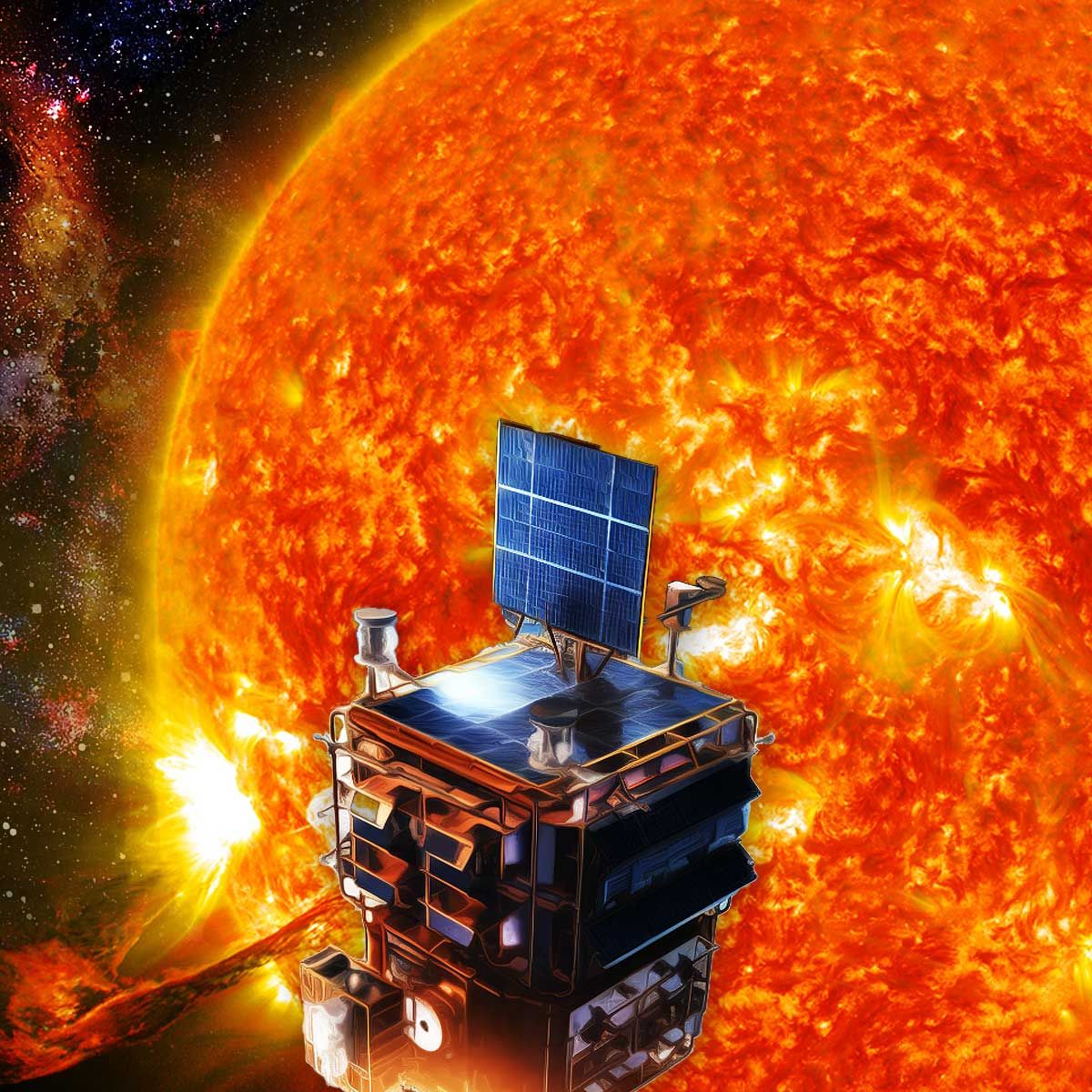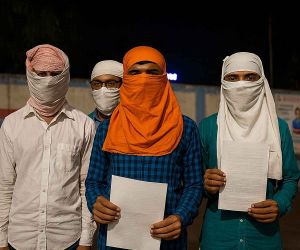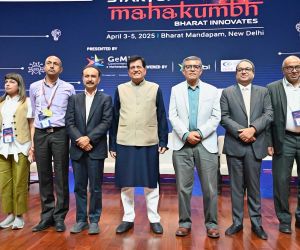MORE COVERAGE
Twitter Coverage
Satyaagrah
Written on
Satyaagrah
Written on
Satyaagrah
Written on
Satyaagrah
Written on
Satyaagrah
Written on
JOIN SATYAAGRAH SOCIAL MEDIA
"India's cosmic journey: From moonbeams to sunrays": ISRO's landmark Aditya-L1 mission set to launch, promising 24x7 Sun surveillance, aiming to decode solar mysteries, it will enhance our understanding of space weather and the profound Sun-Earth dynamics

Following the euphoria of Chandrayaan-3's historic moon landing, the skies seemed to whisper, 'What's next for ISRO?' And the answer shines as bright as the Sun itself - the eagerly awaited Aditya L1 mission.
"From the romantic luminescence of the moon to the blazing brilliance of the sun, our voyage continues," remarked ISRO Chief S. Somanath, adding, "Aditya-L1 is getting ready for launch in September." Aditya-L1 isn't just another mission; it marks India's maiden voyage to study our solar system's central star. It's not merely about exploration; it's about understanding the very life force that sustains us.
Aboard Aditya-L1 will be seven payloads, meticulously designed to scrutinize the Sun's photosphere, chromosphere, and even its outermost enigmatic layers. Initially commencing its journey in low Earth orbit, the spacecraft has been engineered with onboard propulsion, set to catapult itself to the vantage point of Lagrange point L1. The entire celestial dance from Earth to L1 is expected to span a duration of roughly four months.
The anticipation isn't confined to just the Indian soil. As the spacecraft made its way to the Satish Dhawan Space Center (SDSC) in Andhra Pradesh’s Sriharikota, the world watched. The excitement was palpable in the air, in the words of ISRO, which proudly announced: "Aditya-L1, the first space-based Indian observatory to study the Sun, is gearing up for its rendezvous with the cosmos."
Beyond the mechanics, there lies the grand question: Why does studying the Sun hold such paramount importance? The answer resonates with every sunrise and sunset - a deeper understanding of the Sun unravels the very mysteries of life, energy, and the universe. It's about quenching our insatiable thirst for knowledge, about answering the age-old questions of existence, and about asserting India's standing on the global stage of space exploration.
Today, as we stand at the cusp of this new horizon, India isn't just launching a spacecraft; it's launching dreams, aspirations, and a radiant future. From the moonlit tales of Chandrayaan-3 to the solar promises of Aditya-L1, India's cosmic journey is a testament to its indomitable spirit and an ode to the infinite mysteries of the universe.
|
India's Beacon to the Sun: The Aditya-L1 Mission
In a world rife with wonders, India embarks on yet another celestial odyssey with the awe-inspiring Aditya-L1 mission. The term ‘observatory’ falls short of capturing the essence of this spacecraft, for Aditya-L1 is not merely a machine – it's India's 24x7 vigilant eye on the Sun.
For the first time, the Indian scientific prowess will stake its flag on a Lagrange point. Described by NASA as a position where “the gravitational forces of a two-body system like the Sun and Earth produce enhanced regions of attraction and repulsion,” Lagrange points are fundamental to this mission. Out of the five known Lagrange points in the Sun-Earth dynamic, our hero - Aditya-L1, will be placed in a halo orbit around L1, situated about 1.5 million km from Earth. This very spot has cradled the Solar and Heliospheric Observatory, a joint endeavor of NASA and the European Space Agency, since 1996.
The heart of the mission pulsates with its seven magnificent payloads. Four of these are tasked with the honor of directly observing the Sun. These state-of-the-art instruments comprise the Visible Emission Line Coronagraph (VELC), Solar Ultraviolet Imaging Telescope (SUIT), Solar Low Energy X-ray Spectrometer (SoLEXS), High Energy L1 Orbiting X-ray Spectrometer (HEL1OS), Aditya Solar wind Particle Experiment (ASPEX), Plasma Analyser Package For Aditya (PAPA), and the Advanced Tri-axial High Resolution Digital Magnetometers. The sheer names evoke a sense of pride and wonder, don't they?
Their mission? To unravel the mysteries of the Sun's photosphere, the visible radiant surface; the chromosphere, the layer just above; and the corona, the Sun's majestic crown. Positioned in its halo orbit, Aditya L1 boasts the unparalleled advantage of unceasingly observing the Sun, free from any hindrance of eclipses. Such constant vigilance aids in real-time tracking of solar activities and their subsequent impacts on space weather.
|
Harnessing the unique perspective offered by the L1 point, these instruments will offer insights into the ripple effects of solar dynamics in the vast interplanetary medium. Moreover, the payloads of Aditya L1 are primed to address some of space science's most perplexing questions related to coronal heating, coronal mass ejection, pre-flare activities, and so much more.
As Aditya-L1 sets its sights on the cosmos, it reminds us of India's undying spirit of exploration and innovation. In its journey, we don't just see a spacecraft; we see the culmination of dreams, efforts, and the resounding message that the skies are not the limit for India – they are just the beginning.
ISRO, with its characteristic precision and vision, has defined a meticulous set of goals for the spacecraft. Aditya-L1 is on a quest to examine the ebb and flow of the Sun’s chromosphere and corona. These areas, often considered the Sun's outer layers, are fraught with mysteries waiting to be unveiled.
The spacecraft is also designed to immerse itself in the in-situ particle and plasma environment, offering unparalleled insights into the heating mechanisms of the corona. One of the much-anticipated aspects is the study of the Sun's magnetic topology, crucial for understanding the magnetic fields in the corona. The mission will also delve deep into understanding the temperature, velocity, and density of coronal and coronal loop plasmas.
But the mission does not stop at mere observation. It aspires to decipher the genesis, evolution, and dynamics of coronal mass ejections (CMEs), colossal solar eruptions that can influence space weather and even have repercussions on our planet.
In a nutshell, the major science objectives of the Aditya-L1 mission are:
- Investigating the dynamics of the Sun's upper atmosphere, including the chromosphere and corona.
- Delving into the physics of the partially ionized plasma, the origins of CMEs, and what triggers solar flares.
- Scrutinizing the in-situ particle and plasma environment, unveiling the particle dynamics from the Sun.
- Understanding the intricate physics of the solar corona and its unique heating mechanism.
- Diagnosing the coronal and coronal loop plasmas, focusing on their temperature, velocity, and density.
- Discerning the sequence of events across the Sun’s layers, leading up to solar eruptions.
- Mapping the magnetic field topology and gauging magnetic field measurements in the solar corona.
- Identifying the very drivers of space weather, uncovering the origin, composition, and dynamics of the solar wind.
As India embarks on this solar odyssey, Aditya-L1 represents a beacon of hope, curiosity, and pride for the nation. Through this mission, India does not just seek answers but also ignites the imaginations of millions, reinforcing the belief that with determination and vision, the universe is within our grasp.
|
Understanding the Sun: Unraveling the Heartbeat of Our Solar System
The Sun, a ball of fiery, magnificent energy, is far more than just a celestial object illuminating our world. This 4.5 billion-year-old star, stationed a whopping 150 million kilometers from Earth, plays a pivotal role in our lives, wielding power and influence that goes beyond mere daylight. As the centerpiece of our solar system, the Sun's gravity meticulously stitches together the grand tapestry of planets, moons, asteroids, and other celestial bodies. What's intriguing is that unlike our own Earth, the Sun is not solid but is composed of "super-hot, electrically charged gas called plasma," a remarkable revelation by NASA.
As the US space agency astutely points out, the Sun's frenetic activity—ranging from its awe-inspiring eruptions to the incessant flow of charged particles—shapes the very nature of space across our solar system. When we speak of solar activity, we're delving into phenomena like the brilliant solar flares, gargantuan plasma clouds known as CMEs, the high-speed solar wind, and volatile solar energetic particles.
Imagine a sudden, intense burst of radiation emanating from the Sun's surface—this is a solar flare. Such flares aren't mere spectacular displays; they bear the power to disrupt radio communications and pose threats to astronauts navigating the vastness of space. This tumult on the Sun doesn't just stay confined there; it gives rise to what we term as 'space weather', which has profound impacts on Earth and the entirety of the solar system. "Understanding solar events becomes more important for better knowledge of space weather," remarked the Indian Express, highlighting the significance of our star.
Furthermore, the intricate dance of ultraviolet rays, sent forth by the Sun, plays a role in our global climate dynamics. As stated by the Smithsonian Environmental Research Center, these rays not only affect but are also influenced by the ongoing global climate change. BussinessLine aptly notes, "changes in UV radiation can influence cloud formation, water vapor content, and temperature patterns in the Earth’s lower atmosphere." Thus, delving deep into the Sun's behavior is indispensable to grasp its impact on Earth's ever-changing climate.
However, the Sun remains an enigmatic entity. Despite years of relentless pursuit, scientists are grappling with confounding questions. Why is the Sun's corona, which boasts a staggering temperature of 1 million degrees Celsius, hotter than its photosphere, which stands at a relatively cooler 5,500 degrees Celsius? How does the Sun's core blaze with a mind-boggling temperature of 15 million degrees Celsius? And what precisely transpires before the Sun unleashes its mighty solar flares and CMEs into the vast expanse of space, sometimes even hurling them towards our planet?
With the pioneering Aditya L-1 mission, India is not just stepping into the realm of solar exploration; it is embarking on a quest to decode the Sun's myriad secrets. As we as a nation soar towards the Sun, there's more than just scientific curiosity at play; there's pride, hope, and a yearning to understand the universe's mysteries. For in understanding the Sun, we are inching closer to understanding ourselves.
 Support Us
Support Us
Satyagraha was born from the heart of our land, with an undying aim to unveil the true essence of Bharat. It seeks to illuminate the hidden tales of our valiant freedom fighters and the rich chronicles that haven't yet sung their complete melody in the mainstream.
While platforms like NDTV and 'The Wire' effortlessly garner funds under the banner of safeguarding democracy, we at Satyagraha walk a different path. Our strength and resonance come from you. In this journey to weave a stronger Bharat, every little contribution amplifies our voice. Let's come together, contribute as you can, and champion the true spirit of our nation.
 |  |  |
| ICICI Bank of Satyaagrah | Razorpay Bank of Satyaagrah | PayPal Bank of Satyaagrah - For International Payments |
If all above doesn't work, then try the LINK below:
Please share the article on other platforms
DISCLAIMER: The author is solely responsible for the views expressed in this article. The author carries the responsibility for citing and/or licensing of images utilized within the text. The website also frequently uses non-commercial images for representational purposes only in line with the article. We are not responsible for the authenticity of such images. If some images have a copyright issue, we request the person/entity to contact us at This email address is being protected from spambots. You need JavaScript enabled to view it. and we will take the necessary actions to resolve the issue.
Related Articles
- "And the winds and the waves are always on the side of the ablest navigators": ISRO successfully launched GSLV-F12/NVS-01 Mission from SDSC-SHAR, Sriharikota, NVS-01 first of the India's second-generation NavIC satellites that accompany enhanced features
- ISRO successfully tested the Gaganyaan Service Module Propulsion System (SMPS) on July 19, 2023 at ISRO Propulsion Complex (IPRC) , Mahendragiri
- "Cosmic camaraderie": India and Russia's space partnership ignites after Chandrayaan-3's lunar triumph, a legacy of cosmic camaraderie—from Aryabhata to Gaganyaan—heralds a new era of interstellar collaboration and boundless cosmic possibilities
- "In a monumental stride, Bharat ancient roots meet its space-age achievements under Modi": With 'Angad's footstep' on the Moon and landmarks named 'Shiv Shakti' & 'Tiranga', the nation beams with pride as Aug 23 is now immortalized as National Space Day
- "Story of India’s herculean scuffle to get the Cryogenic Engine": India's heavy lift ambitions and ultra-low-cost model could put the likes of NASA out of business, an eventuality that the USA tried to delay India’s space program as long as it can
- "Historic launch of Chandrayaan-3": A lunar mission set to make India the fourth nation to land on the moon, encompassing technological marvel, scientific discovery, and national pride, carving out India's place in the annals of space exploration
- "There is no law except the law that there is no law": Samudrayaan with Matsya 6000 is set to unlock the ocean's enigmatic heart, heralding a new era in harnessing marine resources for a sustainable future symbolizing a big leap in deep-sea exploration
- "Beyond gravity, within safety": ISRO's Gaganyaan mission progresses with Drogue Parachute tests, prioritizing astronaut safety, aiming to send a crew to 400 km orbit for 3 days, it utilizes Human Rated LVM3 and comprehensive training in Bengaluru
- The legend and a genius that was Jagadish Chandra Bose: Champion of East and West Who Almost Invented the Radio
- "Trapping a Scientist": A Kerala cop maliciously framed ISRO scientist Nambi Narayanan in an espionage case after a Maldivian woman rejected his advances, leading to intense surveillance of innocents, and a Supreme Court-mandated Rs 50 lakh compensation
- "Research is creating new knowledge, without which there is no progress": National Research Foundation - a visionary initiative by the Indian govt aimed at centralizing funding for scientific & academic research with an ambitious target of ₹50,000 crore
- India's audacious tryst with the cosmos continues as Chandrayaan-3 flawlessly kisses the Moon's South Pole, a precise Nataraja dance of science, ambition, and national pride, this milestone heralds a new dawn in lunar exploration, Bravo ISRO 🌒🚀
- "Ambition is path to success. Persistence is the vehicle you arrive in": India scripted history as ISRO successfully launches 36 OneWeb broadband satellites in heaviest LVM3-M2 rocket on its debut commercial mission, all satellites separated successfully
- Chandra - NASA’s advanced X-Ray Observatory is named after a brilliant Indian scientist & Nobel Prize-winner Subrahmanyan Chandrasekhar, a Flagship-class space telescope is an Earth satellite in a 64-hour orbit, notably its mission is ongoing as of 2023
- "It is not enough to stare up the steps, we must step up the stairs": On 2nd April 2023, Vikram Sarabhai Space Centre (ISRO) at Thiruvanthapuram, IAF "Chinook" helicopter lifted an aircraft and left it in the sky to fly for high-speed unmanned landing

























